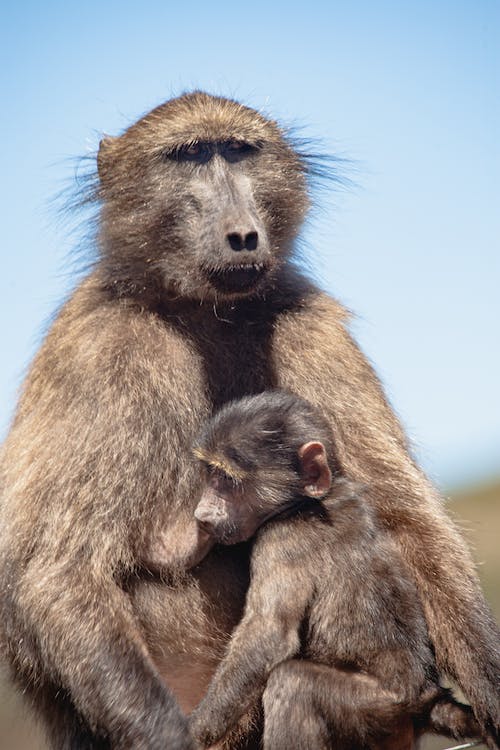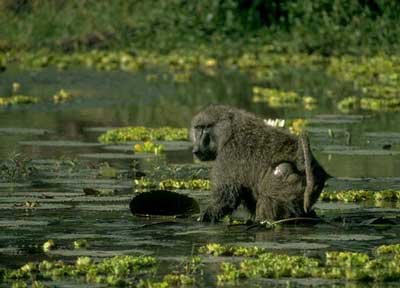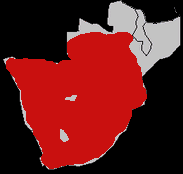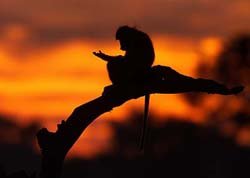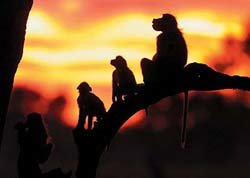It is a large, dog-like, highly gregarious monkey from the Old World, which aggregates in groups of up to 200 individuals. Occurs in diverse habitats from savanna to woodlands, sub-deserts, montane regions, fynbos, and steppes. These baboons feature a lot of social behaviors, from dominance hierarchies, maintained through fighting and aggression, friendship pairing, group foraging, all part of their evolutionary ecology that surpassed many generations. While they are not threatened, the expanding overlapping range of the species with the human population has led to conflict and disturbance with their incredible social culture.
Read further to know more about the Chacma Baboon.
What is a Chacma Baboon?
Chacma Baboon (Papio ursinus), also called the Cape baboon, is an Old World family Cercopithecidae. It is one of the largest monkey species, thriving in much of southern Africa and boasting an array of social behaviors that have transcended through time. These are very crafty creatures, frequently menacing locals and tourists of Africa. However, such occurrences result in them being tagged as “problem animals,” and they are often killed through trapping, hunting, and accidents.
Its seven levels of classification are as follows:
Kingdom: Animalia
Phylum: Chordata
Class: Mammalia
Order: Primates
Suborder: Haplorhini
Infraorder: Simiiformes
Family: Cercopithecidae
Genus: Papio
Species: P. ursinus
Chacma Baboon Physical Description
Chacma Baboon is a large Old World monkey, easily recognizable with its dog-like face, and notable canines. Males are relatively larger, measuring 1.5 meters from head to tail, and weighing about 21 to 45 kilograms. Meanwhile, females appear to be slender, growing 1.1 meters, and weighing 12 to 25 kilograms.
These primates have a huge skull, but a tapered, constricted, downward face. The pelage is characterized by black hairs, accentuated by yellow-brownish tips and subtler hair with black edgings, while the back has dark-brown to dark fur. Muzzle sides and underparts have lighter colors. The facial skin is purplish-black, while hands and feet are both black.
Where can they be spotted?
Chacma Baboons are spread throughout much of southern Africa. They thrive in an array of habitats from savanna, to woodlands, sub-deserts, montane regions, fynbos, and steppes, avoiding areas with lack of water sources. These primates can be seen sleeping on cliffs, hills, and large trees.
Interesting Facts You Should Know About the Chacma Baboon
Chacma Baboons are omnivorous monkeys, feeding primarily on various types of animals and plant matter. It consumes insects, eggs, and small vertebrates, and vegetation, such as flowers, fruits, leaves, grass, tree crowns, tubers, roots, gums, rhizomes, and corns.
These primates are diurnal, spending much of their day on the ground before returning to the resting areas in the afternoon. As a highly gregarious species, they live in very large troops, consisting of up to 200 individuals, but mostly occur in a group of 30 to 40 baboons called a troop. They feed, sleep, and groom together, keeping their hygiene by plucking out fleas and ticks from one another. These baboons are often seen exploring new locations or objects near their vicinity, or simply searching for food during the cooler times of the days.
A troop is then divided into a sub-group, composed of a dominant male, and 4-5 females, plus their young ones. The dominant male leads the sub-group and protects it from other males. The members are always vigilant and looking out for predators, such as lions, hyenas, leopards, and sometimes caracals that are lurking around. While they aren’t the most ferocious creatures in Africa, these baboons won’t go down without a fight, especially with leopards who they often engage battles with for trees as shelter. If threatened, the dominant male will give out loud barks, howl, or screams, signaling the female and young ones to seek refuge.
Chacma Baboons have a polygynandrous mating system. The dominant male fights with the other males for the mating right in the sub-group. However, the female may mate with several males throughout their lives and may also prefer certain males to mate with. Breeding may occur at any time of the year. The gestation period usually lasts about six months, conceiving a single baby. The offspring will stay with its mum, clinging onto its breast and soon enough, riding her back. The infant is weaned for about 8 to 12 months before reaching sexual maturity at four and a half to 5 years of age. Females may mate again after a year or and a year and a half after rearing the child.
Significant threats to the Chacma Baboons’ population are hunting, and the use of species of medical research. Moreover, they are not welcomed by farmers and are considered as problems animals. They are being shot for preying on livestock and damaging crops and plantations. Nevertheless, the species number seems to be stable, with about 3-4 individuals present in a square kilometer in its range. Chacma Baboons are currently evaluated as Least Concern (LC) under the IUCN Red List of Threatened Species.
WILDLIFE PARKS AND RESERVES WHERE THIS SPECIES IS FOUND:

